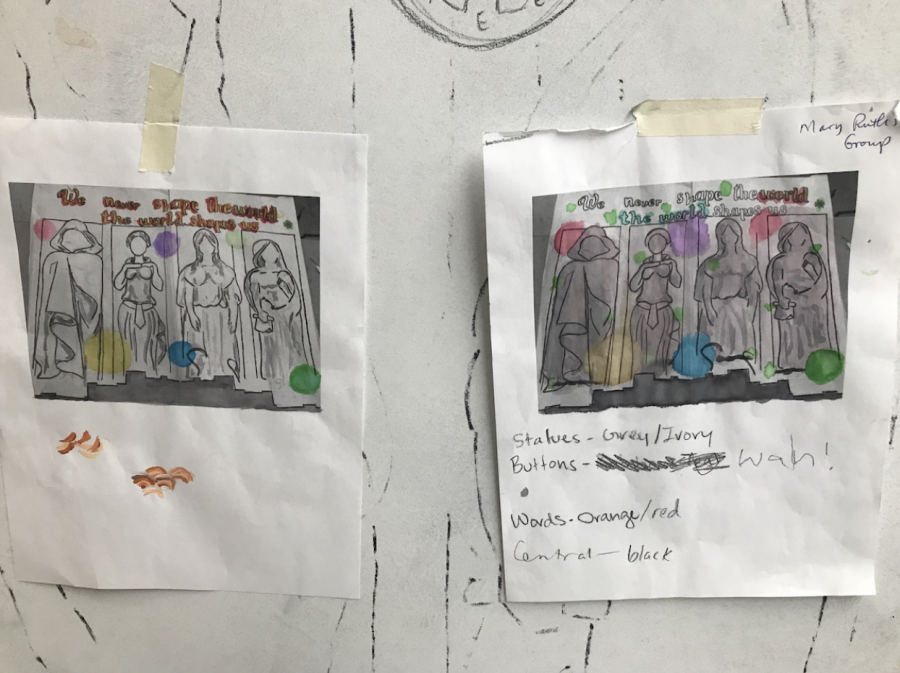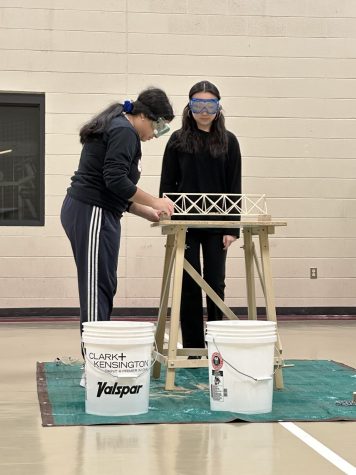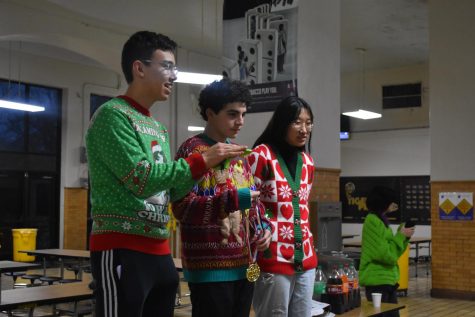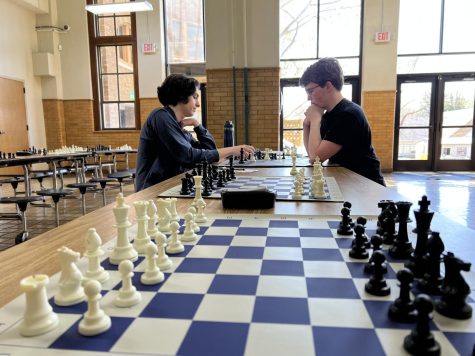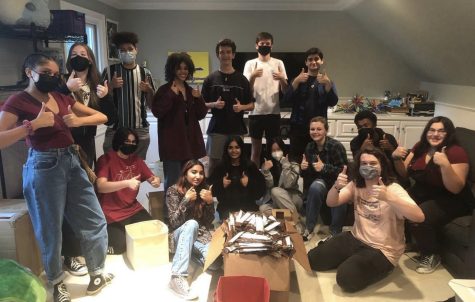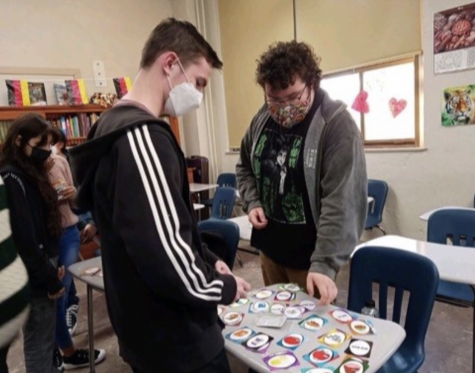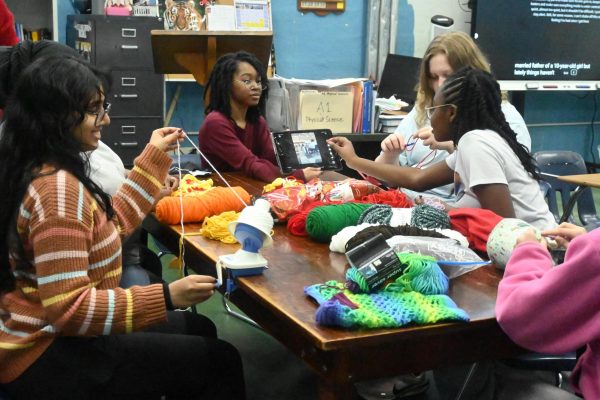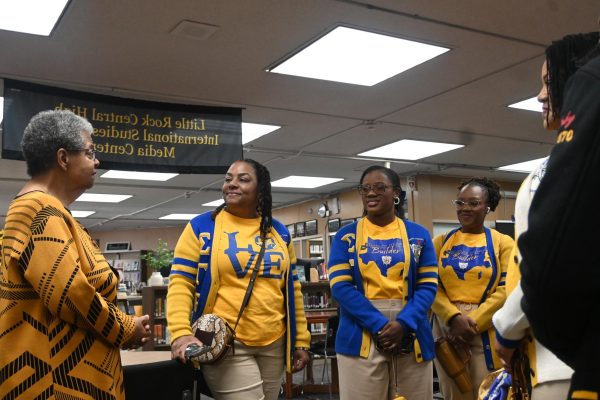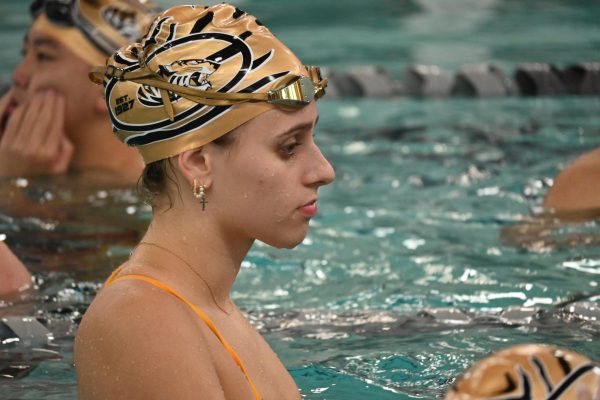Art Club Creates Visual Legacy of School’s History
Draft sketches are created so artists can have a reference for the final mural panels.
Last year, over 70 Art Club students collaborated to start a project to revamp the murals in the auditorium. The eight panels they are planning reflect the school’s contributions to history over eight decades starting in the 1920s.
“Because Central is such a historically charged school, the natural conversation was Central’s history,” art teacher Jessica Taverna said.
Art Club students flipped through old yearbooks, talked to librarian Stella Cameron, read newspaper archives, and interviewed teachers to gather inspiration.
“Whatever they found in the research to be the most powerful, we pushed those ideas,” Taverna said.
Graduates Mary Ruth Taylor, Aslyn Sorrows, Skylar Goodson, and senior Isabelle Boysen recreated the four figures that read “Ambition, Personality, Opportunity, Preparation” over the front entrance of the building. After they chose their designs, they freehanded or used tracing paper to transfer a sketch onto the wood panels with markers.
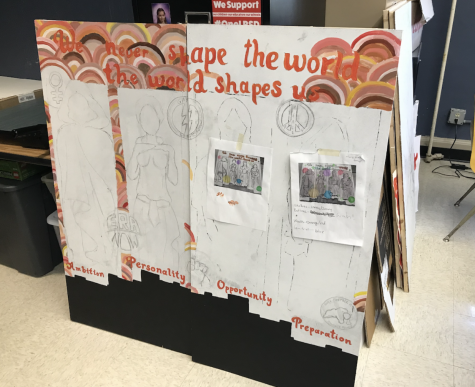
The murals don’t just serve as a remembrance of the school’s history.
“Anytime you’re putting art in the building, it just helps with the culture,” art department co-chair Rex DeLoney said. “It just adds a colorful pop and some eye candy for visitors.”
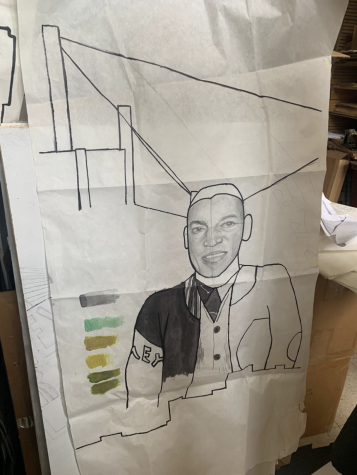
The panels do this by representing each decade’s larger theme, like vibrant flowers for the 60s, or colorful buttons symbolizing important historical movements. Students Mimi Ryall, Allie Fisken, Johanna Weinheimer, and Joie Willoughby decided to paint Riley Johns, an African American athletic trainer who worked on campus before desegregation occurred during the 1957 Central High Crisis.
Each panel is distinctly different from the other, encapsulating the political and social climate of the decade. To tie them all together an acrylic painted black silhouette of the building’s outline spreads across all eight panels.
Zane Alsebai, last year’s Art Club President said the murals emphasize diversity because of how intertwined they are with the school’s culture.
“Although Central has this diverse history, that doesn’t necessarily mean that it’s always been carried on in its legacy today,” Alsebai said. “So I think having that visual representation reminds people about where we’ve come from and where we need to go.”





